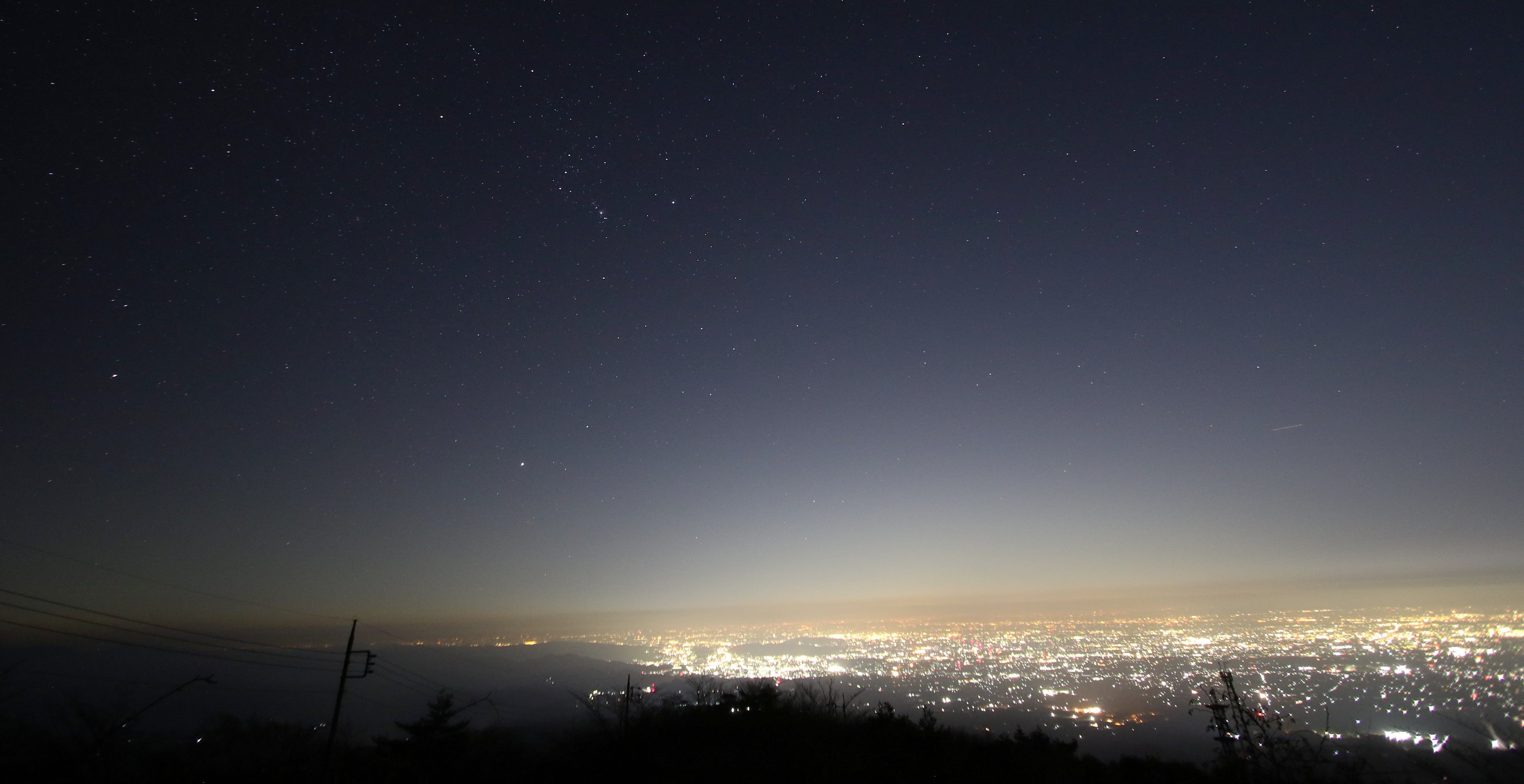Protection of Optical and Infrared Astronomy
What is Optical and Infrared Astronomy?
The starry sky that you look up and find is the sky seen in visible light. Astronomy research is conducted by analyzing electromagnetic waves including radio waves, infrared rays, visible light, ultraviolet rays, X-rays, and gamma rays, that reach the earth from celestial objects,
but only a small portion of it is visible to the human eyes.
Until the middle of the 20th century, observation using optical telescopes in visible light was almost the only means of astronomy observation.
Today, it is possible to observe the universe by almost all wavelengths of electromagnetic radiation. In visible and infrared astronomy, a wide variety of celestial objects are the targets of observation, including various celestial objects in the solar system, stars and the interstellar materials illuminated by the stars, exoplanets, and galaxies and galaxy clusters.
In recent years, multi-messenger astronomy combined with observations other than electromagnetic waves such as gravitational waves and neutrinos has also been conducted, and optical and infrared telescopes are still major instruments that advance astronomy.
Optical telescopes are not used limited to astronomical research.
There are many public observatories in Japan, where anyone can look the stars through a telescope and enjoy the stars in the night sky.
If we can keep the sky sufficiently dark, we can enjoy more beautiful celestial objects at these observatories.
What is Light Pollution?
Various problems caused by artificial lights are called light pollution.
With the expansion of urbanization and transportation networks, outdoor lighting is increasing. Excessive and inappropriate use of lighting can be disorienting and reduce our ability to recognize important information such as traffic lights.
These artificial lights also effect wildlife and ecosystems. Nocturnal animals, insects, commercial crops, and baby sea turtles also have their bio-rhythms disrupted.
In addition, the light emitted toward the sky or leaked up to the sky is diffused by moisture and dust in the atmosphere, increasing the brightness of the night sky and impeding astronomical observation.
The image at the top of this page is the night sky in the direction of Tokyo seen from the Mt. Akagi Observatory in Gunma prefecture (December 2020).
You can see a yellowish glow above the cityscape, which make stars that should be visible to the naked eye hazy.
Compared with the night sky over Hahajima in the Ogasawara Islands, where there is no light pollution, you can recognize a clear difference in the appearance of the stars. The image below compares the night sky of Hahajima and the night sky of Mt. Akagi.
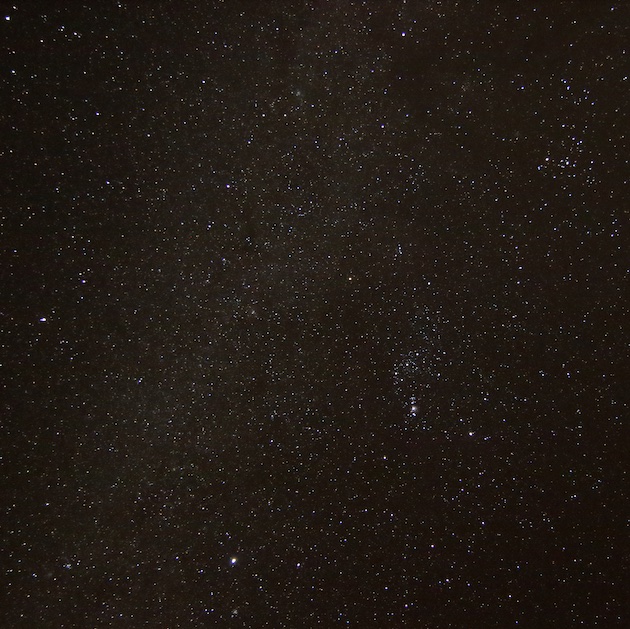

Protect Astronomical Observations from Light Pollution
Measures to Reduce Light Pollution
To reduce light pollution, it is best not to emit unnecessary light at night. In order to secure the minimum required brightness to ensure traffic and personal safety, we should employ the available technology such as lighting with minimal upward leakage and low-pressure sodium lamps. It is also necessary to take a multifaceted approach including public awareness campaign and official public policy.
Domestic Trends
The Ministry of the Environment has set up a webpage, and raised awareness of light pollution and air pollution through starry sky observation programs which deepen public interest in environmental conservation. They have also created and published the "Light Pollution Control Guidelines" that summarize the environmental considerations when using artificial light.
Some local governments have enacted light pollution ordinances. Kumamoto, Okayama, and Nagano prefectures have their own ordinances requiring light pollution prevention in the ”Living Environment Ordinances*". In October 2021, Nagano Prefecture revised the ordinance and renamed it “Ordinance on the preservation of a good living environment*” adding some measures to prevent light pollution, which regulate the amount of lighting which can be used to the minimum necessary, forbid the use of searchlights outdoors, and acknowledge the need for preservation of a good starry sky. Tottori Prefecture enacted the "Tottori Prefecture Starry Sky Preservation Ordinance*" in 2017, and established both general regulations for all areas and special rules for starry sky conservation areas, to maintain a good starry sky environment, with the aim of promoting tourism and the local economy, and providing environmental education.
Regarding technology for light-pollution-prevention, Panasonic Corporation and Iwasaki Electric Co., Ltd. are selling LED security lights and streetlights certified by DarkSky International ( Formerly known as IDA, International Dark-Sky Association) as "Dark Sky Friendly Lighting," and they are installed in towns and cities promoting starry sky protection. “Dark sky friendly lighting" means that there is no glare, no upward light leakage (0% upward flux ratio), and a color temperature below 3000 K, which is the color of a light bulb, i.e., there is little short-wavelength light (bluish light). The warm light gives calmness and warmth to the cityscape at night.
The International Dark Sky Places have been established in 2001 by DarkSky to encourage the protection of the starry sky from light pollution and to recognize outstanding efforts to protect the dark and beautiful night sky. In Japan, several municipalities have applied to DarkSky for certification as International Dark Sky Places and have been certified by effective measures against light pollution including replacing outdoor lightings to environmentally responsible ones.
In 2018, Iriomote Ishigaki National Park in Okinawa prefecture was certified as Japan's first International Dark Sky Place, which was followed by Kozushima Island in Tokyo in 2020, in which the municipal’s efforts to protect their sky from light pollution as a whole island were recognized. In 2021, Bisei Town, Ibara City in Okayama prefecture, was recognized for their activities for protection spearheaded by local government.
Minami-Rokuroshi of Ono City in Fukui prefecture certified in August 2023, was recognized for its various activities by Ono City that has collaborated with the Fukui University of Technology, including education on light pollution, night sky brightness surveys, installation of environmentally responsible security lights, streetlights, and outdoor lighting of public facilities, and public relations activities.
Several other municipalities in Japan are also preparing for certification as International Dark Sky places. Kunigami Village in Okinawa prefecture has applied for certification in 2025. Misaka Highland, Mishima-cho in Fukushima prefecture and Wadacho-Kamiku of Minami-Boso City in Chiba prefecture are preparing for application by protecting the current dark night sky, making effective use of their locations. In June 2025, Hoshino Village of Yame City in Fukuoka Prefecture, where Hoshi no bunkakan is located, announced that they began to prepare for application for certification as International Dark Sky place.
For more information on Dark Sky Places in Japan, please visit the following website and find a brochure.(Japanese Language)
>>Dark Sky Places brochure (outside )>>Dark Sky Places brochure (inside )
International Trends
The International Astronomical Union (IAU) established Commission 50: Identification and Protection of Existing and Potential Observation Sites in 1973 to offer relevant information and awareness activities,
and to cooperate with the International Commission on Illumination (CIE: Commission Internationale de l'Eelairage) for a study based on lighting technology.
This collaboration later resulted in the publication of the "Guidelines For Minimizing Sky Glow".
The Office of Astronomy Outreach (OAO) of the IAU is promoting the “Dark and Quiet Skies Project”
to deepen people's understanding of light pollution and radio interference problems.
(The interview about the Dark and Quiet Skies Project is here.)
In October 2020, a workshop was held by the Committee on the Peaceful Uses of Outer Space (COPUOS) and the International Astronomical Union (IAU), with the aim of protecting astronomy and ecosystems from light pollution and radio interference.
In 2022, "Light pollution reduction measures in Europe" was published, which summarizes the light pollution prevention efforts of European countries, including regulations on light pollution and guidelines and manuals for raising awareness.
Protect Astronomy Observations from Light Reflected off Artificial Satellites
The image below is the night sky over Nobeyama in Nagano prefecture. The track flying from the upper left to the lower right is a Starlink satellite.
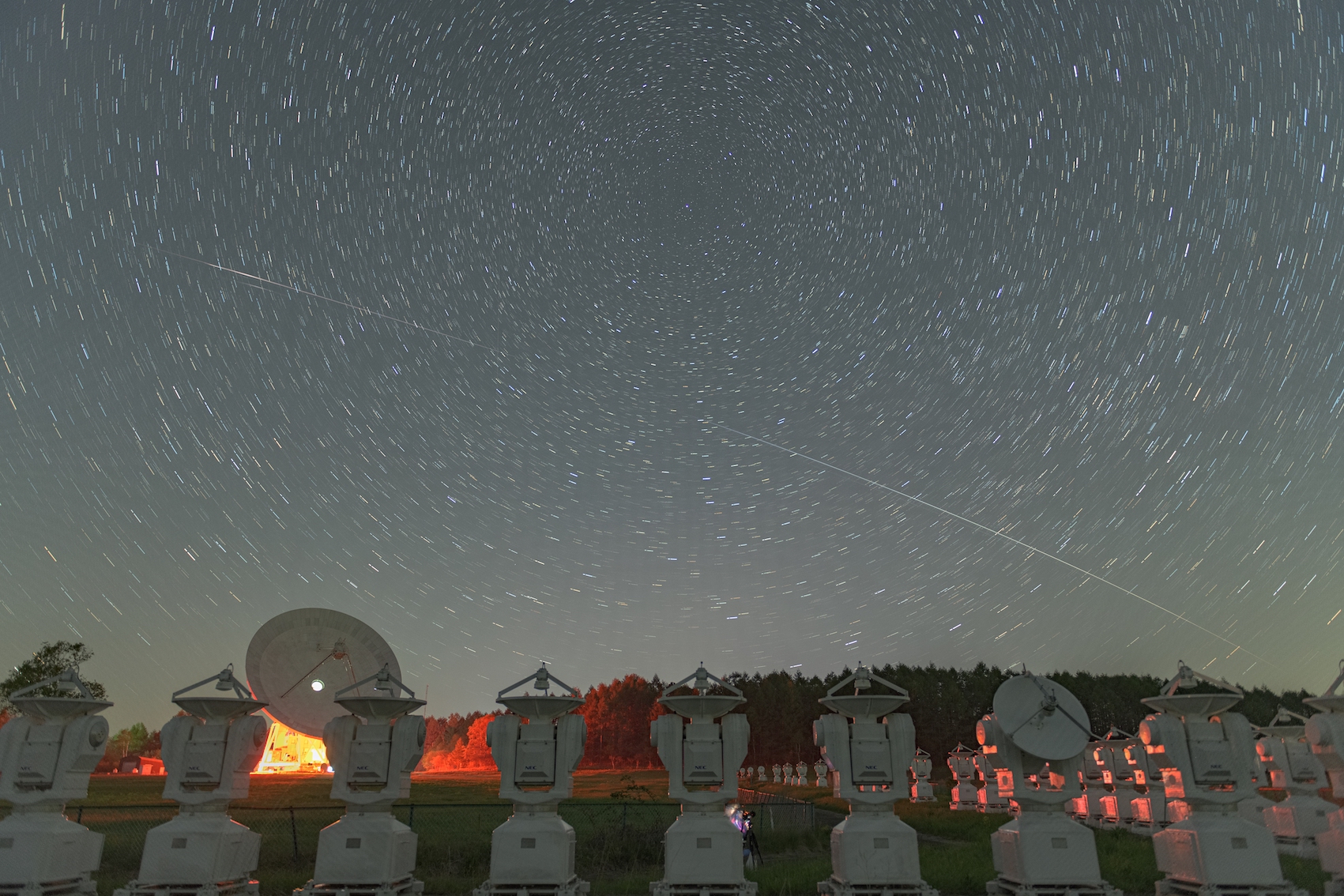
Impacts of Satellite Constellation and Countermeasures
Artificial satellites moving across the night sky at a fast speed and reflecting sunlight affect astronomical observation. A total of 42,000 Starlink satellites are scheduled to be launched for the purpose of providing global communication network services.
The main body of each satellite and the solar cell panel exposed to sunlight reflect that light and shine in the visible and infrared bands. Therefore, we can see them as bright objects from the ground for several hours after sunset or before sunrise, which could be a great impediment to astronomical observation.
SpaceX, which owns and operates the Starlink satellites, is making considerations for coexistence with astronomical observation by taking measures to reduce the brightness of their satellites. Examples launched since 2020 include the DarkSat satellite with a black coating and the VisorSat satellite equipped with a "shade" to reduce the reflection of sunlight.
The black coating of the DarkSat satellite causes the body of the satellite to retain heat and could affect peripheral equipment. Satellites with a high temperature radiate infrared rays, and appear as bright objects to infrared telescopes on the ground. In August 2020, SpaceX launched VisorSats, to test a different approach to reducing reflected light.
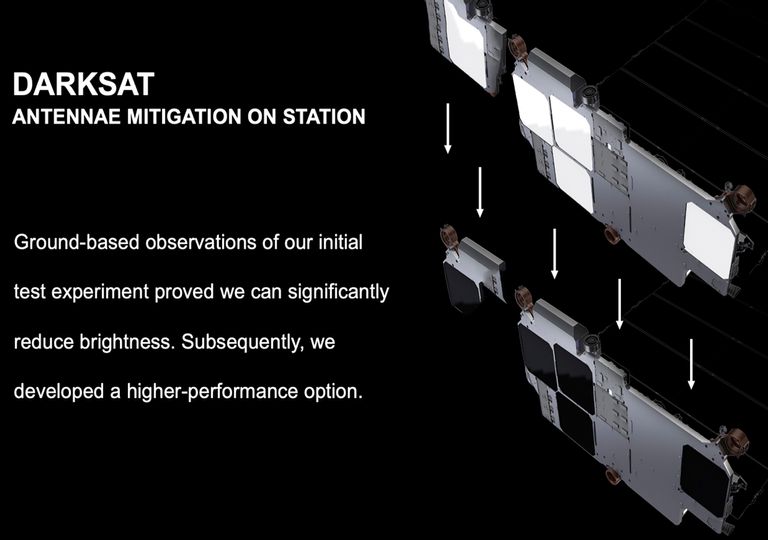
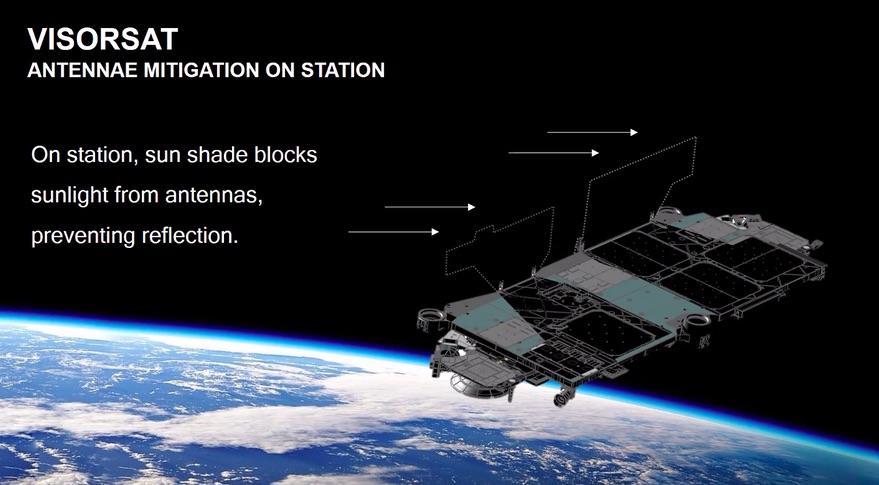
from reaching the antenna © SpaceX


from reaching the antenna © SpaceX
In February 2023, SpaceX has launched the second-generation Starlink satellite "V2 mini," and,
in September, adopted both dielectric mirror film and low-reflective black coating, to reduce sunlight reflection and avoid interference with astronomical observations.
In April 2022, the IAU established the Center for the Protection of the Dark and Quiet Sky from Satellite Constellation Interference (CPS) as an organization
that takes charge of measures against satellite constellations in response to the rapidly increasing number of satellites.
CPS consists of not only those involved in astronomy but also satellite operators, and is discussing practical measures for coexistence of satellite constellations and astronomical observations.
In October 2023, IAU held a symposium " Astronomy and Satellite Constellations: Pathways Forward" to discuss about the protection of astronomy from satellite constellations.
▶ The current location of the Starlink satellite on Earth can be found here.
>>Location of Starlink SatelliteSatellite Constellation Observation
The National Astronomical Observatory of Japan( NAOJ) conducted an investigation from April to June in 2020 to clarify whether the black-coating applied on satellites would in-fact reduce the impact on astronomical observations. The Murikabushi Telescope at Ishigakijima Astronomical Observatory is able to measure the brightness of celestial bodies in three colors (wavelength bands) simultaneously. By comparing coated and uncoated satellites, astronomers confirmed for the first time, that the black coating reduced the reflectance of the surface by about half, and that the longer wavelengths tend to look brighter regardless of whether or not the satellite is coated. (Published in "Astrophysical Journal" on December 7, 2020.)
For Visarsat, NAOJ, in collaboration with OISTER, has conducted a study of Visorsat and demonstrated that Visorsat can reduce sunlight reflection by approximately half compared to a regular Starlink satellite.
The results were published as "Multicolor and multi-spot observations of Starlink's Visorsat" by Horiuchi et al.
in “Publications of the Astronomical Society of Japan (PASJ) " on April 8, 2023.
Although the sunshade of Visorsat was found to be effective in reducing sunlight reflection,
the satellite trails were bright enough to be of concern for their impact on astronomical observations.
Names with * are unofficial translation.



